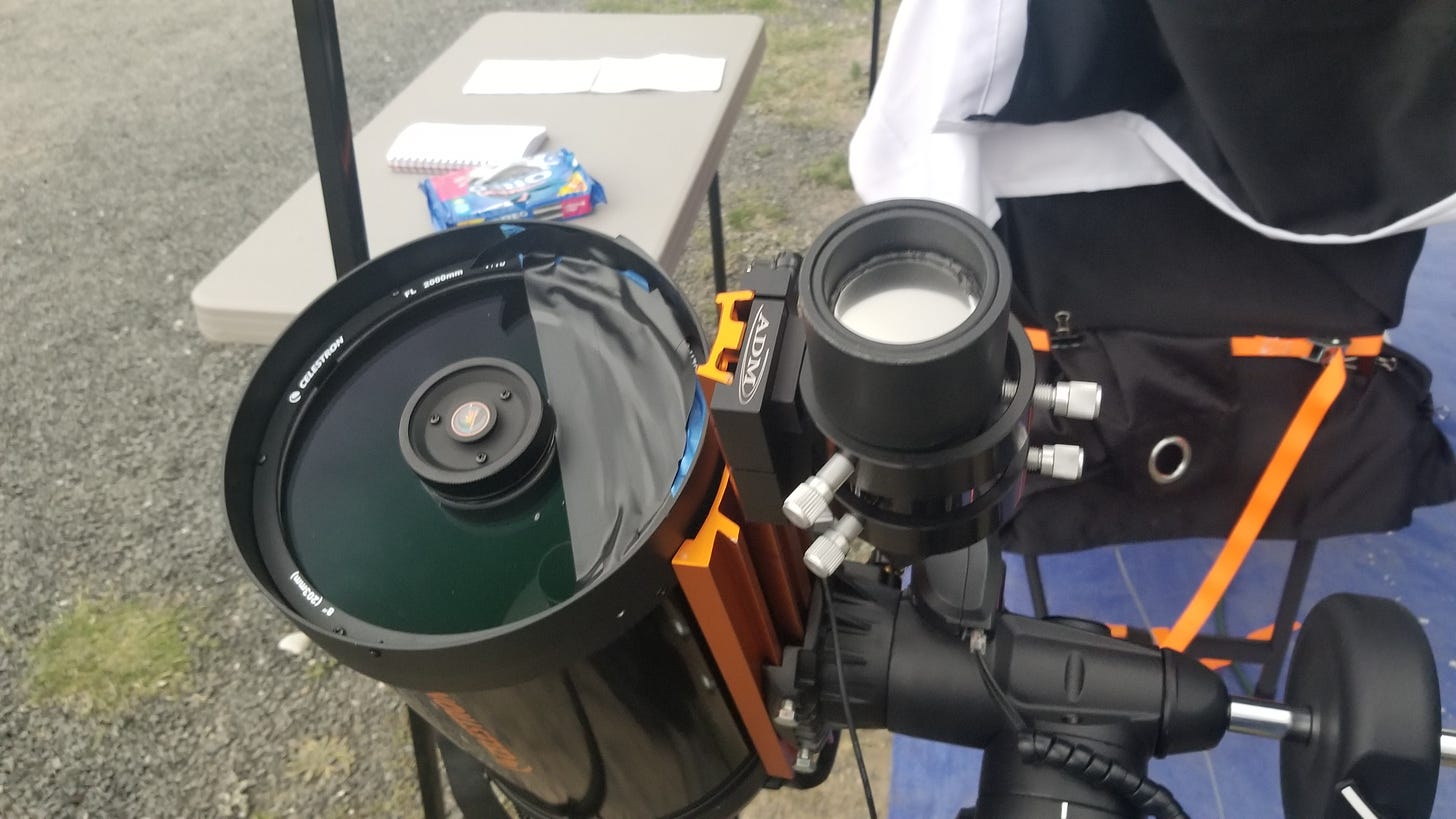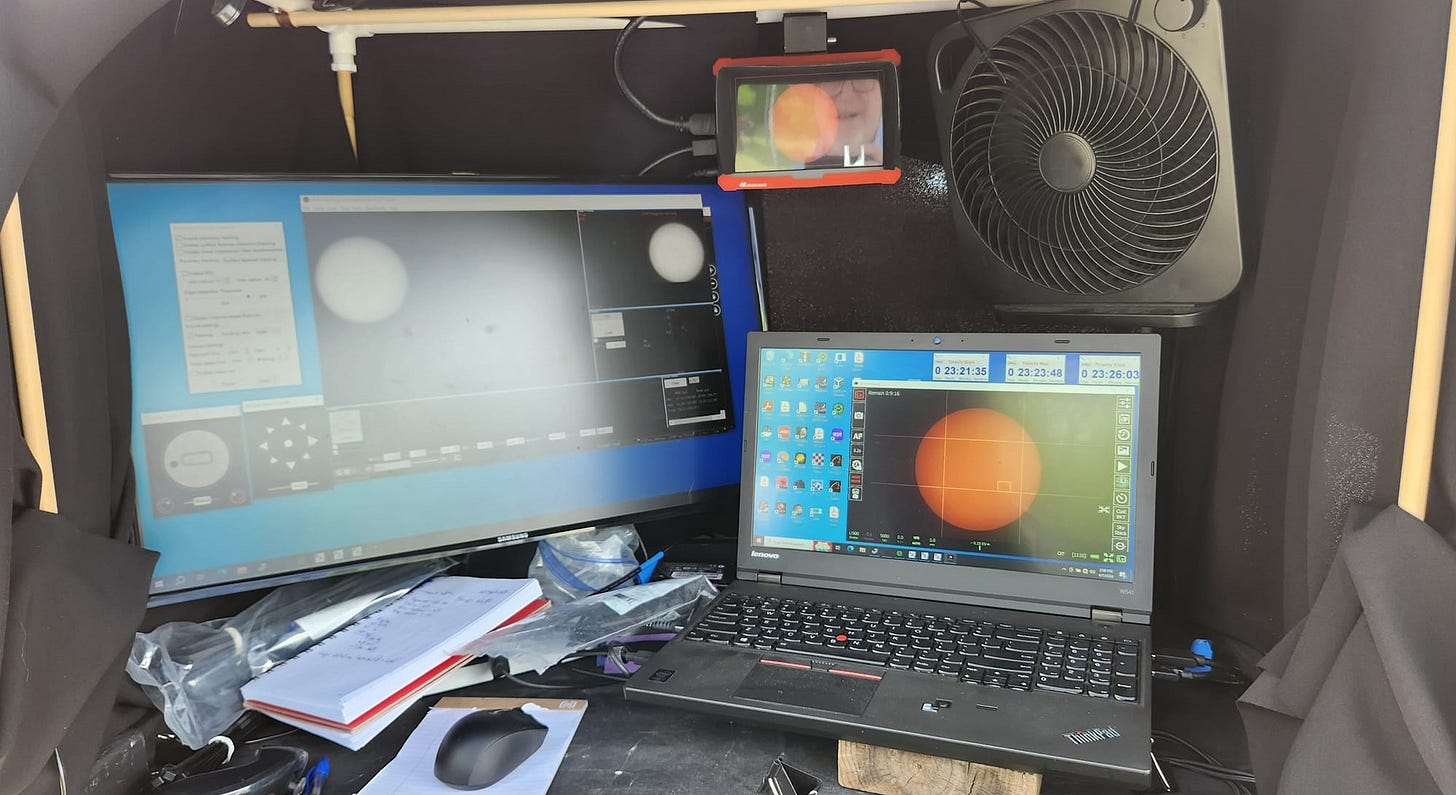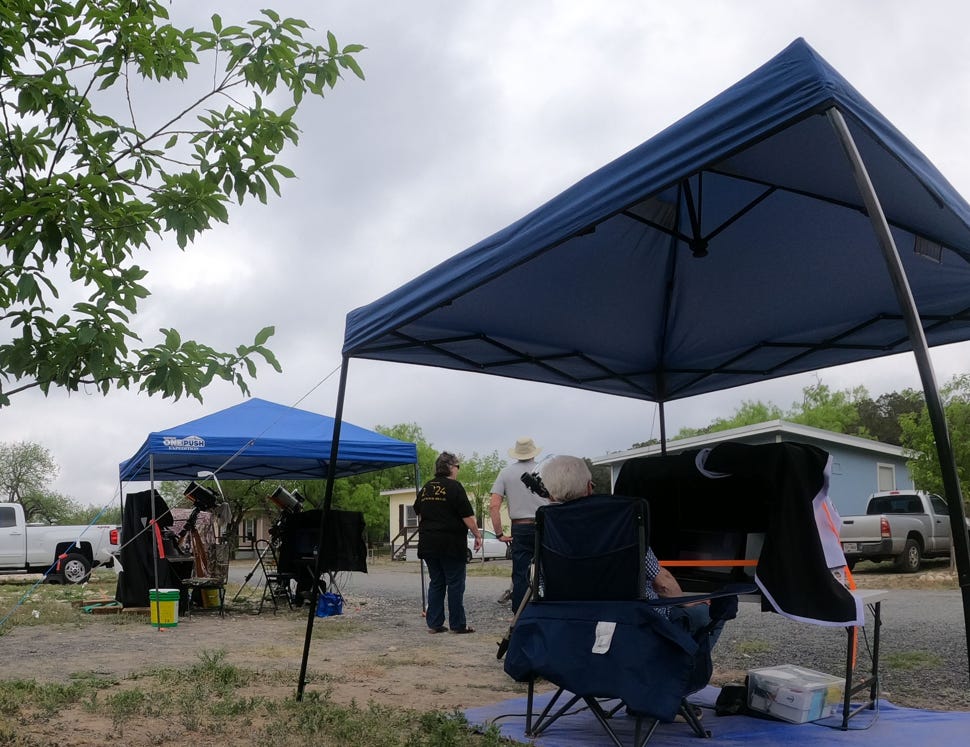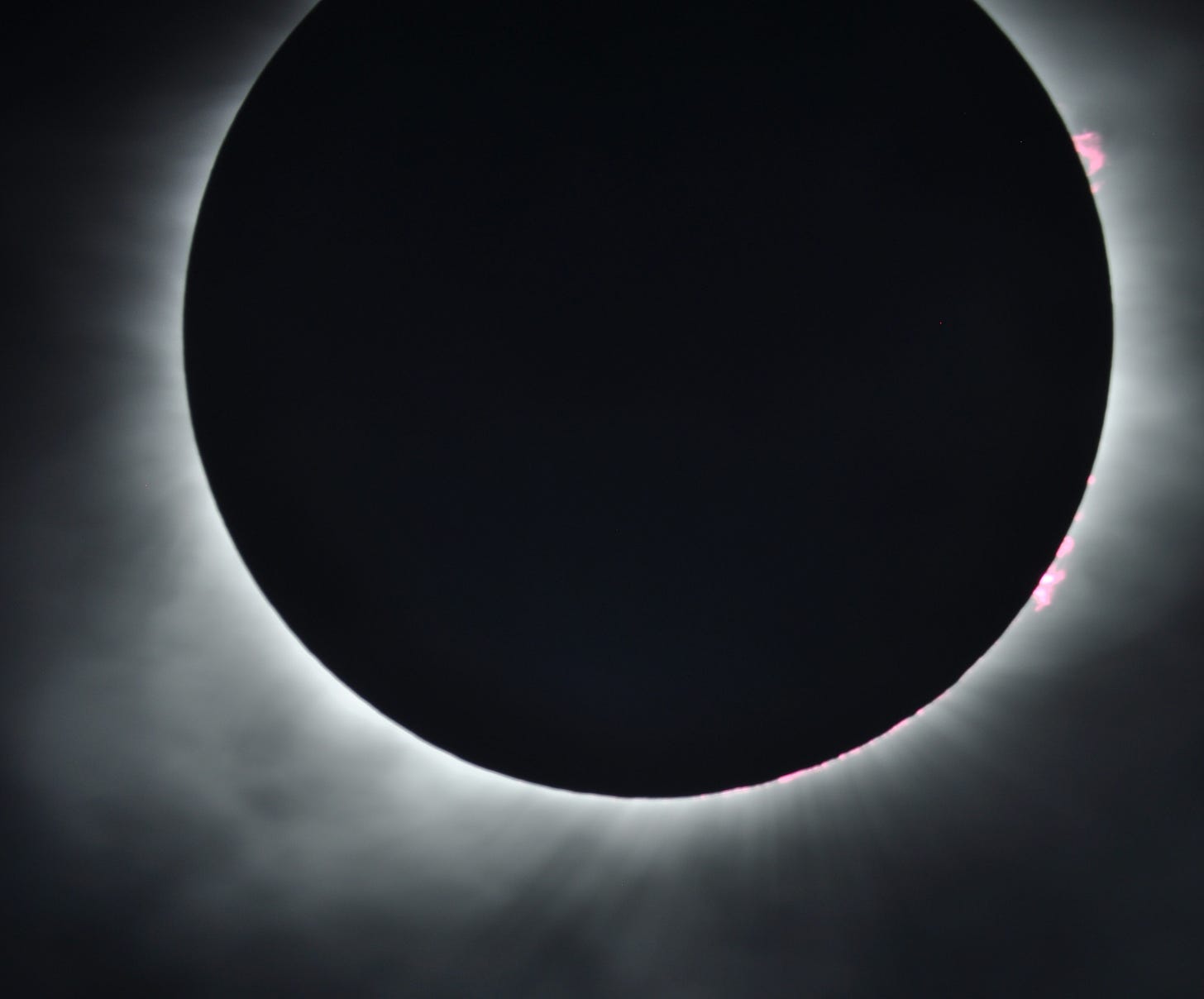Ad astrum per aspera (To the star through difficulties)
View of total solar eclipse from Texas through clouds
In a rare break from what I normally write about …
The singular form of the Kansas state motto, ad astrum per aspera, seemed appropriate as our trip motto to Camp Riverview near Concan in the Texas Hill Country.
Our goal was to take pictures of earth’s star during the total eclipse on Monday, but we faced difficulties including clouds and my broken telescope.
Video of Total Eclipse from Texas
Credits
Music: “Under The Sun” by Keys of Moon. Music promoted by Chosic under Creative Commons CC BY 4.0.
Map: 2 Great Texan Eclipses by Great American Eclipse.
Comments
Greg Redfern, @SkyGuyinVA, makes a cameo appearance at 0:20 in the video. Greg is a NASA ambassador and gave two very informative talks about space, stars, and eclipses.
Totality pictures at Camp Riverview (0:35 - 0:41), which was quite long: 4 minutes and 28 seconds.
Solar pictures start at 0:42 and almost always have clouds interfering with the view. The orange tint in the video is the sun’s color after passing through a solar filter that blocks 99.99% of the light. Just like human eyes, electronics and optics can be badly be damaged without a solar filter.
Wind shear can be seen in the clouds (0:46 - 0:58), which was a precursor to some severe storms in Texas later in the day.
Hint of the partial eclipse phase shows at 0:52. Many gaps in the eclipse progression could not be captured due to clouds.
Clouds blocked any view of totality, as shown at 3:03 in the video. Totality can be safely photographed without the solar filter. The sun appears bright white without the solar filter.
The video was taken through the badly damaged telescope shown below. That was almost a miracle!
“Solar Central” at Camp Riverview
My brother, Bill Glynn, over two years ago identified the area around Camp Riverview as a great place to view both the annular eclipse last October and the recent total eclipse.
We went to Camp Riverview in Oct. 2022 to check out the site, and have returned twice for observing eclipses.

Viewing computer monitors in bright daylight is difficult, so we built “blinds” to see the screens and monitors in a dark environment while under the sun.
I’ve been playing catch up with my brother, who has had a telescope for over 30 years. His help was invaluable in getting up to speed on techniques and software to use.
My computer blind has a monitor (upper right) connected directly to the camera (Nikon Z6ii).
The computer at left controls the telescope through software (Celestron PWI).
The high-resolution camera can be triggered manually using qDslrDashboard software, even while streaming HDMI video.
I triggered a aDslrDashboard script that took 300 pictures during totality on Monday, but unfortunately clouds completely blocked our view. Most of the still pictures were not worth taking.
An HDMI split of the video signal from the camera was routed to a separate computer to use OBS Studio software to capture everything on video.
We use PHD2 Guiding software to keep the sun exactly in the center of the screen automatically on clear days, but it does not work well with clouds. The Celestron mount does a good job in tracking, but PHD2 makes improvements. PHD2 works with a smaller “guide scope,” which can be seen at the right in the picture below.
All of the software packages can run on a single computer, but OBS Studio demands a lot of resources and cannot run reliably on the same computer with the other applications. The computer at the right is only used to run OBS.
My telescope was badly damaged

This was my third trip to Texas with my Celestron telescope.
On this trip I made a mistake while assembling the scope on Saturday: I accidently bumped the corrector glass plate and it shattered into many pieces. I thought that was the end of the road for any eclipse pictures on Monday.
My brother, a long-time telescope expert, and a brilliant technician, David Costales, came to the rescue. They had concerns that the glass shards might move when the telescope was steered, so one layer of tape was applied to keep the shards of the glass corrective place intact and not move when the scope was steered.
There were also concerns about “weird” reflections and diffractions of light through the glass shards. So, a second layer of black electrical tape was applied to block light transmission through the damaged area.
Tests were run after dark and the collimation and focus seemed to still work with stars, so I was in business for the total eclipse. Additional tests tracking the sun on Sunday were also successful.
If only something could have been done about the clouds!
Related
Our 2017 picture
We fell a bit short in improving totality pictures we took of the 2017 total eclipse in Liberty, MO, such as the picture below.









Thank you!!! Great video! Sorry to hear about your telescope but glad your brother could fix it!
Thanks for this, efg. The view here in the KC Metro was awesome at 89.4% totality. We lost 3’ F. in temperature and it was dark inside. Friends saw it without clouds in Pencil Bluff, Ark. and Poplar Bluff, Missouri, but non brought back telescopic videos.